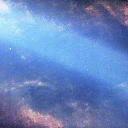Menu: Skip within this page

About the Small Bodies Node
The Small Bodies Node (SBN) of the Planetary Data System is a distributed node with expertise on comets, asteroids and interplanetary dust. The node data collection and verification activities are spread among several institutions specializing in particular bodies (comets, asteroids, or dust), while the main archives and user services are collected in a single place.
SBN Advisory Council
| Dr. Daniel Britt | University of Central Florida | 2003 -- present |
| Dr. Schelte "Bobby" Bus | University of Hawaii | 2008 -- present |
| Dr. Anita L. Cochran | University of Texas | xxxx -- present |
| Dr. Yan Fernández | University of Central Florida | 2008 -- present |
| Dr. Will Grundy | Lowell Observatory | 2014 -- present |
| Dr. Mihaly Horanyi | Laboratory for Atmospheric and Space Physics (LASP), Univ. of Colorado | 2011 -- present |
| Dr. William Reach | The Infrared Processing and Analysis Facility (IPAC/Caltech) | 2003 -- present |
Our Subnodes
Comet SubnodeThe Comet Subnode is located at the University of Maryland, in College Park, Maryland. In addition to maintaining the combined archives of the SBN and supporting the SBN web site, the Comet subnode collects, formats, verifies and consults on datasets concerned with comet observations as well as providing support for active comet missions and observing campaigns.
Image Credit: Comet C/Hyakutake, scanned image taken on 24 March 1996 by Dave Kenyon. |
|
Asteroid/Dust SubnodeThe Asteroid/Dust Subnode is located at the Planetary Science Institute in Tucson, Arizona. The Asteroid subnode collects, formats, verifies and reviews ground based and mission data pertaining to asteroids, transneptunians, small planetary satellites and interplanetary dust.
Image Credit: Asteroid (243) Ida, Galileo Solid State Imager (SSI) image.
|
Node Activities
Activities at PDS data nodes like the SBN include:
- formatting and archiving data from current and on-going missions
- coordinating the creation and archiving of data from coordinated observing campaigns
- restoring datasets from past missions
- supporting the archive, so that the files are available to the community
- assisting users in interpreting the data
Archiving
The Planetary Data System is an archive for planetary datasets past, present and future. It is the goal of the PDS to archive data files with sufficient documentation and ancillary information (flat fields, instrument parameters, ephemeris tables, etc.) that the data will be useful, meaningful and accessible to astronomers in future generations.
Both ground-based and space-based observations are included in the PDS archives, data nodes applying their in-house expertise to each case as needed. Each subnode is staffed by researchers who work with the data and are available for consultation.
Peer Review
An important part of the archiving process is a critical peer review of the candidate datasets. After the data node has formatted the files and gathered all the associated documentation and support files, external reviewers with the appropriate scientific expertise are asked to carefully review the set for completeness and usefulness. The comments and criticisms of the reviewers are noted, and if serious problems or deficiencies are found in the data, the files are not accepted into the archives unless and until the problems are corrected.
You may occasionally come across datasets in these pages that are marked as "Under Review". These are the files which are currently undergoing the review and correction process. Unless otherwise stated, all datasets available through the SBN have passed review.



